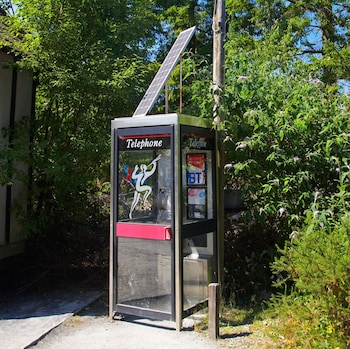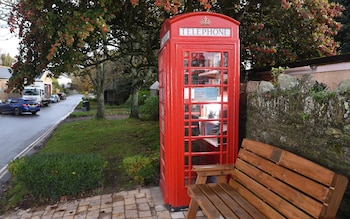A heritage charity is battling to save “ugly” 1980s BT phone boxes from the scrap heap as the end of the public payphone looms.
The Twentieth Century Society, which campaigns to preserve iconic buildings and designs, is attempting to secure listed status for three KX100 telephone kiosks ahead of their planned removal.
The iron and glass boxes, which were installed between 1985 and 1996, were widely panned as “ugly” when they debuted, particularly in comparison to their iconic red predecessors. One writer branded them “infrastructure for corporate profit not common good”.
Yet the Twentieth Century Society said the structures were “underappreciated” and described them as the “final flourish of design-led telecommunications infrastructure in the public realm”.
The telephone boxes were designed by David Carter Associates, the consultants behind the Stanley Knife and Le Shuttle trains for the Channel Tunnel.
They were designed to be modern, vandal-proof, rust-proof and well ventilated.

The Twentieth Century Society said it was important to preserve examples of the phone boxes given BT was removing hundreds each year, with a “mass extinction” for the remaining kiosks thought to be likely.
The campaign group acknowledged that a mass listing for the KX100 kiosks would be “neither credible nor desirable”, but has selected three examples it deems to be the most historically significant.
These include a kiosk at Dunsop Bridge in Lancashire, which sits at the geographic centre of Britain and its 401 associated islands and was the 100,000th to be installed.
The society said a payphone near Maaruig on the Isle of Harris that carries the original yellow British Telecom branding was a contender for the country’s most remote and scenic.
The third example is located at the Centre for Alternative Technology (CAT) in Machynlleth, Wales. It is powered by a solar panel on its roof and an adjacent 18-feet high wind turbine.
The number of payphones across the UK peaked at just over 100,000 in the mid-1990s, but there are now fewer than 20,000 remaining across the country as the rise of mobile phones has left them redundant.
Regulator Ofcom has stepped up safeguards against the removal of kiosks in areas where they are an essential community lifeline.

BT has also launched an “Adopt a Kiosk” scheme that allows communities to purchase redundant phone boxes for just £1 to transform them into amenities such as book exchanges, food banks or micro-pubs.
It is not the first time heritage campaigners have mounted a campaign to protect phone boxes.
In 1985, the Thirties Society, a forerunner of the Twentieth Century Society, launched its “Take it as Red” campaign to save the classic Gilbert Scott models following the privatisation of British Telecom.
Oli Marshall, campaigns director at Twentieth Century Society, said: “We’re now reviving our famous campaign in an attempt to preserve a handful of the underappreciated KX100’s – the last-in-the-line of the public payphone.
“It may be viewed as the ‘ugly duckling’ in comparison with the iconic red phone boxes, but with these three kiosks we’ve identified the very best exemplars across the country that deserve their place in the history books.”
Disclaimer: The copyright of this article belongs to the original author. Reposting this article is solely for the purpose of information dissemination and does not constitute any investment advice. If there is any infringement, please contact us immediately. We will make corrections or deletions as necessary. Thank you.



